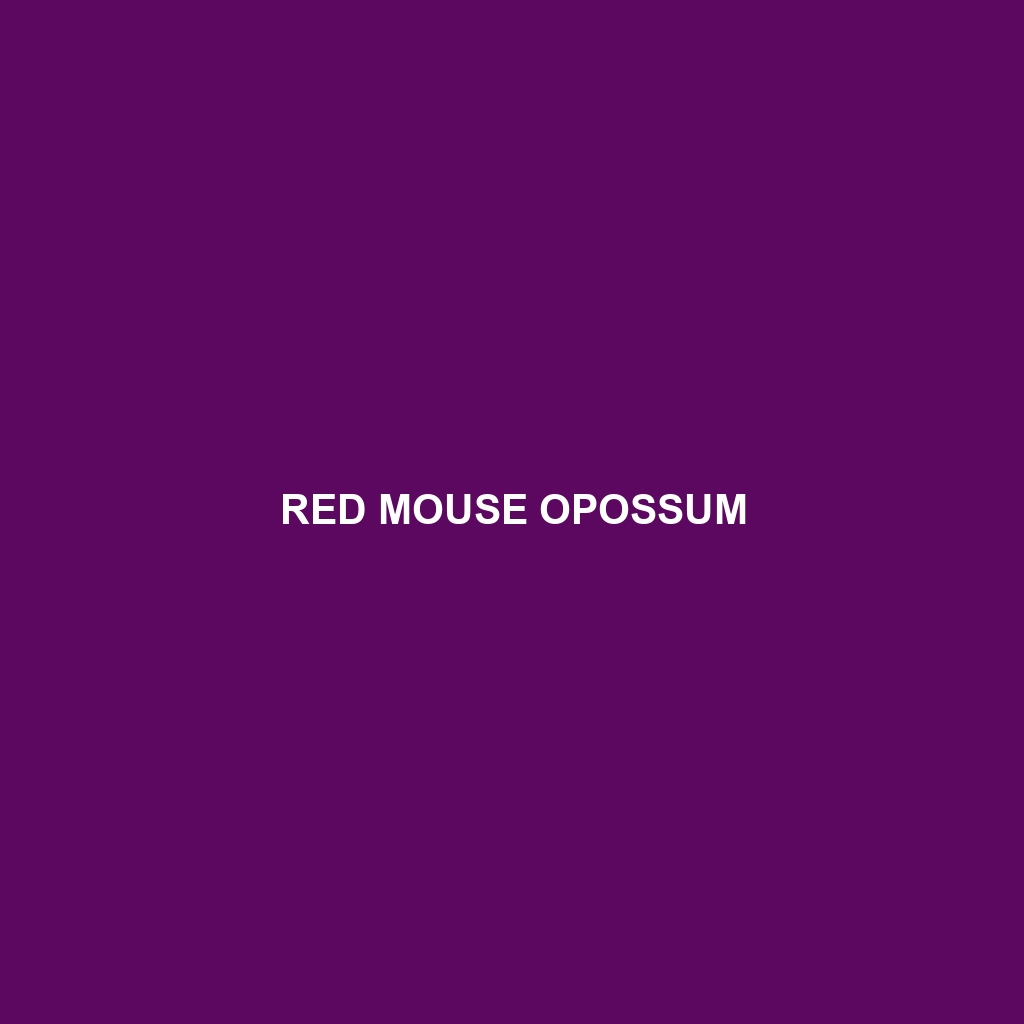Red Mouse Opossum: A Comprehensive Profile
The Red Mouse Opossum (Marmosa rubra) is a small, nocturnal marsupial belonging to the family Didelphidae. Known for its vibrant reddish-brown fur, this elusive creature inhabits the dense forests of South America. Despite its diminutive size, the Red Mouse Opossum plays a significant role in its ecosystem, contributing to seed dispersal and insect population control.
Physical Characteristics:
Size: The Red Mouse Opossum typically measures between 10 to 15 centimeters in body length, with an additional tail length of approximately 12 to 18 centimeters. They weigh around 25 to 45 grams.
Coloration: The fur of the Red Mouse Opossum is a striking reddish-brown on the dorsal side, while the ventral side is lighter, often a creamy white. This coloration provides effective camouflage in their forest habitat.
Special Features: They possess large, dark eyes adapted for nocturnal vision, and their long, prehensile tail aids in climbing and maintaining balance in the trees. Their sharp claws and agile limbs are perfectly suited for an arboreal lifestyle.
Behavioral Traits:
Social Interactions: Red Mouse Opossums are generally solitary animals, except during the breeding season. They communicate through a series of high-pitched calls and use scent markings to establish territory.
Feeding Habits: These omnivores have a diverse diet that includes insects, small vertebrates, fruits, and nectar. Their role as pollinators and seed dispersers is crucial for the maintenance of their forest ecosystems.
Ecological Roles: By controlling insect populations and aiding in seed dispersal, Red Mouse Opossums help maintain the ecological balance of their habitats. They also serve as prey for larger predators, thus contributing to the food web.
Habitat and Adaptations:
Habitats: Red Mouse Opossums are primarily found in the tropical and subtropical rainforests of South America, particularly in regions with dense foliage and abundant fruiting plants.
Adaptations: Their nocturnal nature helps them avoid daytime predators. Their prehensile tail and sharp claws enhance their arboreal prowess, allowing them to navigate the forest canopy with ease. Their diet versatility enables them to exploit various food sources, making them resilient to seasonal changes in food availability.
Conservation Status:
The Red Mouse Opossum is currently classified as Least Concern by the IUCN Red List. However, habitat destruction due to deforestation poses a significant threat. Conservation efforts are critical to preserving their natural habitats and ensuring their continued survival.
Fun Facts:
Unlike many other marsupials, the Red Mouse Opossum does not have a pouch. Instead, it carries its young on its back until they are mature enough to fend for themselves.
These opossums have a high reproductive rate, with females capable of producing several litters each year, which helps maintain their population despite predation pressures.
Their large eyes, which are an adaptation for nocturnal life, give them excellent night vision, allowing them to hunt and forage efficiently in the dark.
The Red Mouse Opossum, with its vibrant appearance and vital ecological role, is a fascinating species that underscores the rich biodiversity of South America’s rainforests. Understanding and protecting this small yet significant marsupial is essential for maintaining the health and balance of their natural habitats.
